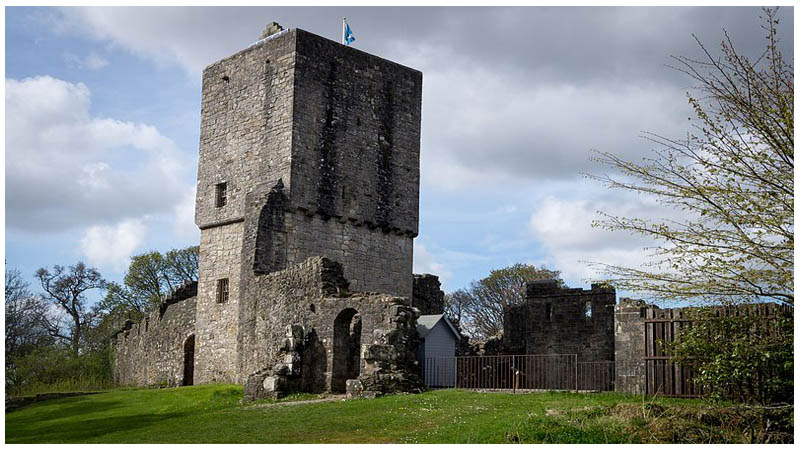About ten miles (16 kilometers) north of Glasgow is Mugdock castle and Mugdock Country Park. The lands were gifted to Scotland’s Central Regional Council in 1981 to be opened to the public as a country park. But within those grounds stands Mugdock Castle, a building which had seen almost continual use since the 14th century.
The lands themselves were acquired in the mid-13th century by the Clan Graham from the Earl of Lennox.
It’s unclear whether the castle was built by Sir David de Graham or his son, but what is clear is that it was standing in 1372 since it was mentioned in a document dated August 24, 1372, that was signed at the castle.
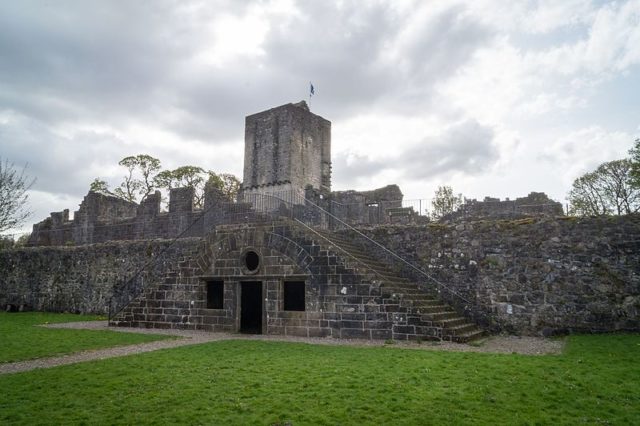
The castle had impressive natural defenses. It was built in a prime defensive position on a rocky promontory. Just below the promontory was Loch Mugdock.
A volcanic ridge running east to west on the south side of the castle meant that the loch was deep and dangerous.
Visitors to the castle today may not find the loch particularly impressive, but that is because Victorian quarrying destroyed the volcanic ridge, resulting in the water level dropping significantly.
In medieval times, the loch would have posed a daunting prospect to attacking enemies as it covered the west, east, and north sides of the castle.
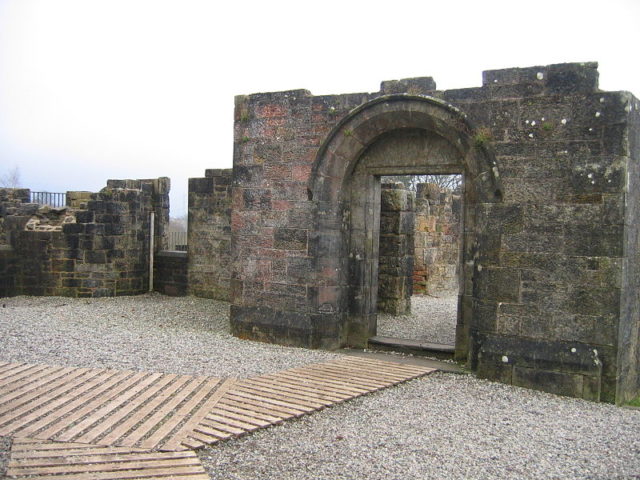
The castle itself was sacked several times over the centuries, so that little of the original structure remains today. However, it is generally thought that it was a rectangular shape with a curtain wall and a tower at each corner. Entrance to the castle was through a portcullis in the south wall.
Inside the castle was the main courtyard, a Great Hall, and other ancillary buildings.
Today, only the southwestern tower remains fully complete. It is four stories high with a single room on each floor and a vaulted basement. The rest of the ruins consist of part of the curtain wall, the basement of one of the other towers, and part of the gatehouse.
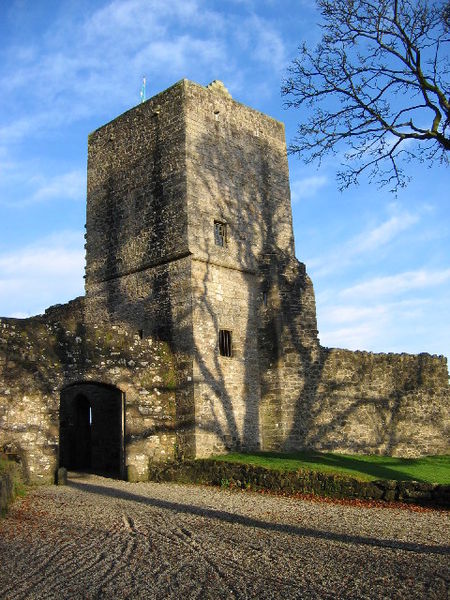
In the 15th century, it seems that the castle was modified, possibly to deal with the fact that gunpowder was now common on the battlefield. The curtain wall was rebuilt not just to be higher and sturdier but also to enclose a larger area of land. Gun-loops were also added to the fortified walls. It was around this time that the Great Hall was also built.
During the English Civil War, the castle was sacked twice. In 1684, the owner of Mugdock Castle (James Graham, who had acquired the title of the Marquis of Montrose) was held as a prisoner in Edinburgh Castle, and Lord Sinclair attacked Mugdock.
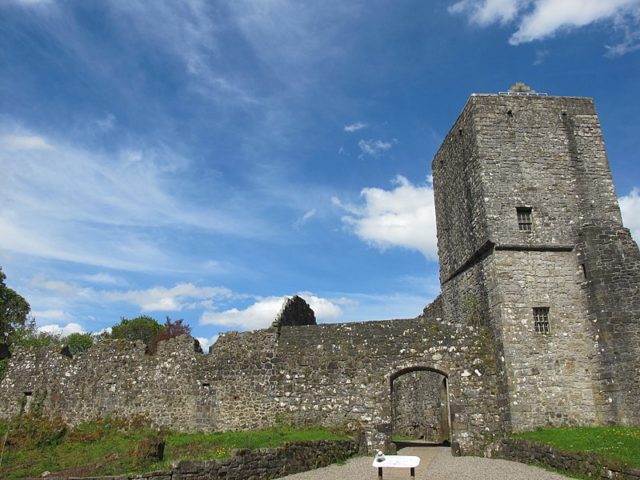
When Graham was executed, his lands became forfeit and were given to the Marquis of Argyll, Archibald Campbell. Eventually, Campbell sold Mugdock Castle back to Graham’s son, James Graham, for £50,000.
Unfortunately, the cost of buying back the castle almost bankrupted James, and he didn’t have the funds to restore the castle to its former glory. Instead, he built a two-story manor house within the grounds.
When Campbell was executed as a traitor, the Mugdocks regained their £50,000 but chose to buy different lands instead of renovating their demolished castle.
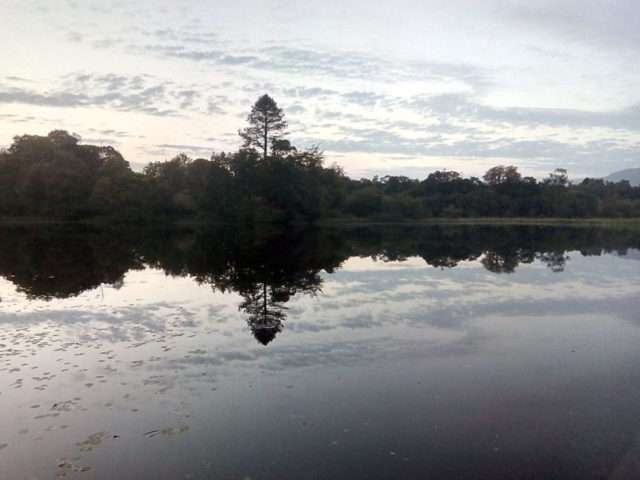
Mugdock was not forgotten, though, and a junior branch of the Graham family lived there. Between 1820-30, a summerhouse was built on the site, and a walled garden was added as well formal flowerbeds. There was even a tennis court at one point.
In 1847, the land was leased to John Guthrie Smith who demolished the house and built a mansion which was linked to the southwest tower by a covered walkway. The new house was in the Scottish baronial style and was three stories high. He chose to renovate the stables and the washhouse of the castle, though.
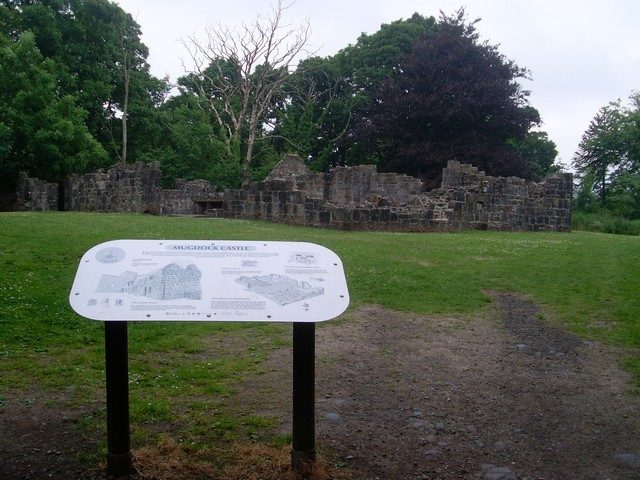
This new house was in constant use until 1948, and during World War II, an Anderson Shelter was built in the grounds.
In 1945, the house was purchased by Baron Hugh Fraser of Allander. He passed away in 1966, and after a devastating fire gutted the building, the decision was taken to demolish it in 1967
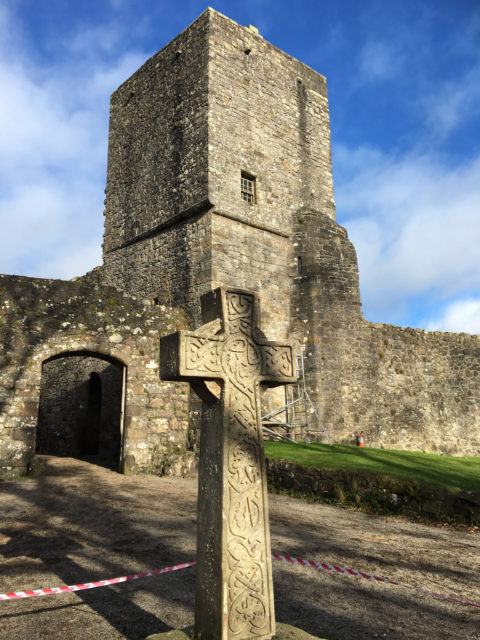
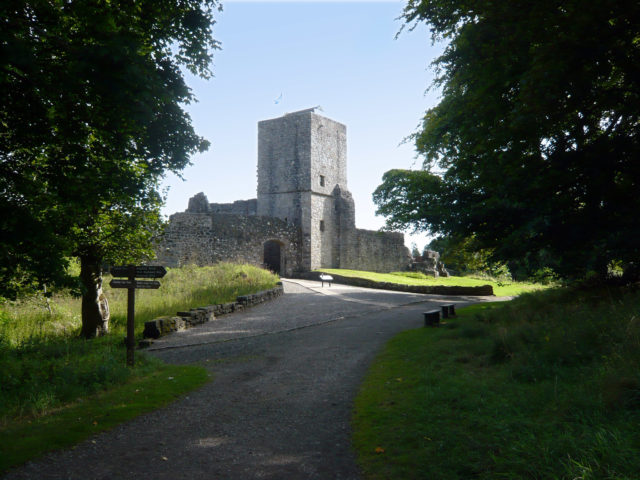
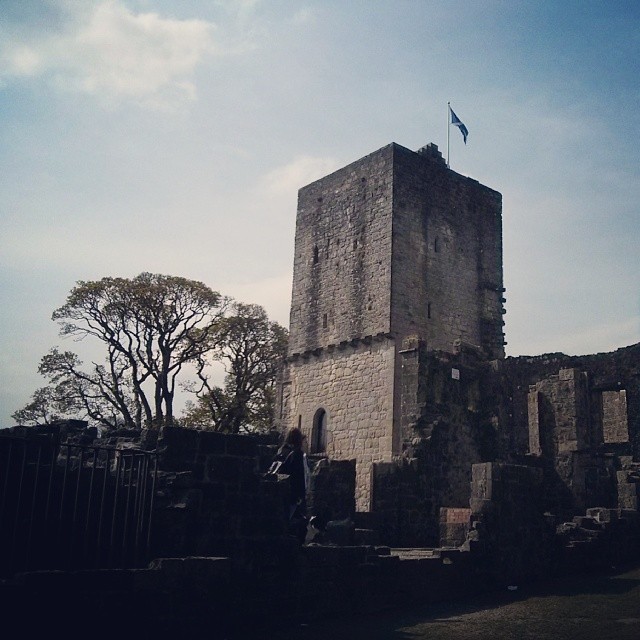
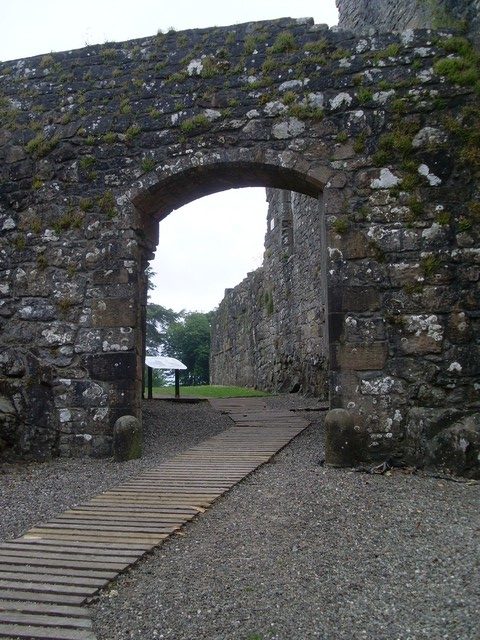
Another Article From Us: The Derelict Dundas Castle in New York
Today, Mugdock park and the remains of the castle are open to visitors. It’s a popular location with a visitor center and plenty of events throughout the year.
